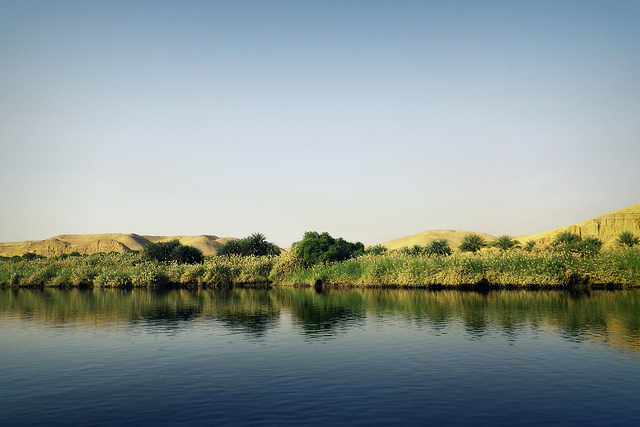
Looming crisis of the much decreased fresh-water supply to Egypt's Nile delta
A multi-year study of Egypt's Nile Delta places the country's major breadbasket at serious risk.
The soil-rich delta evolved as the result of natural conditions involving the Nile's fresh water flow and transport of sediment northward from Ethiopia, across the Sudan and Egypt to the Mediterranean.
About 70% of water flow reaching Egypt is derived from the Blue Nile and Atbara River, both sourced in Ethiopia. Over the past 200 years, rapidly increasing human activity has seriously altered flow conditions of the Nile. Emplacement in Egypt of barrages in the 1800s, construction the Aswan Low Dam in 1902, and the Aswan High Dam in 1965 has since altered water flow and distribution of nourishing organic-rich soil in the delta.
Egypt's population has recently swelled rapidly to about 90 million, with most living in the soil-rich Lower Nile Valley and Delta. These two areas comprise only about 3.5% of Egypt's total area, the remainder being mostly sandy desert. Due to much-intensified human impact, the delta no longer functions as a naturally expanding fluvial-coastal center. Less than 10% of Nile water now reaches the sea, and most of the nutrient-rich sediment is trapped in the delta by a dense canal and irrigation system.
Read the full article via Phys.org web site.
[Photo by westpark | Flickr]







